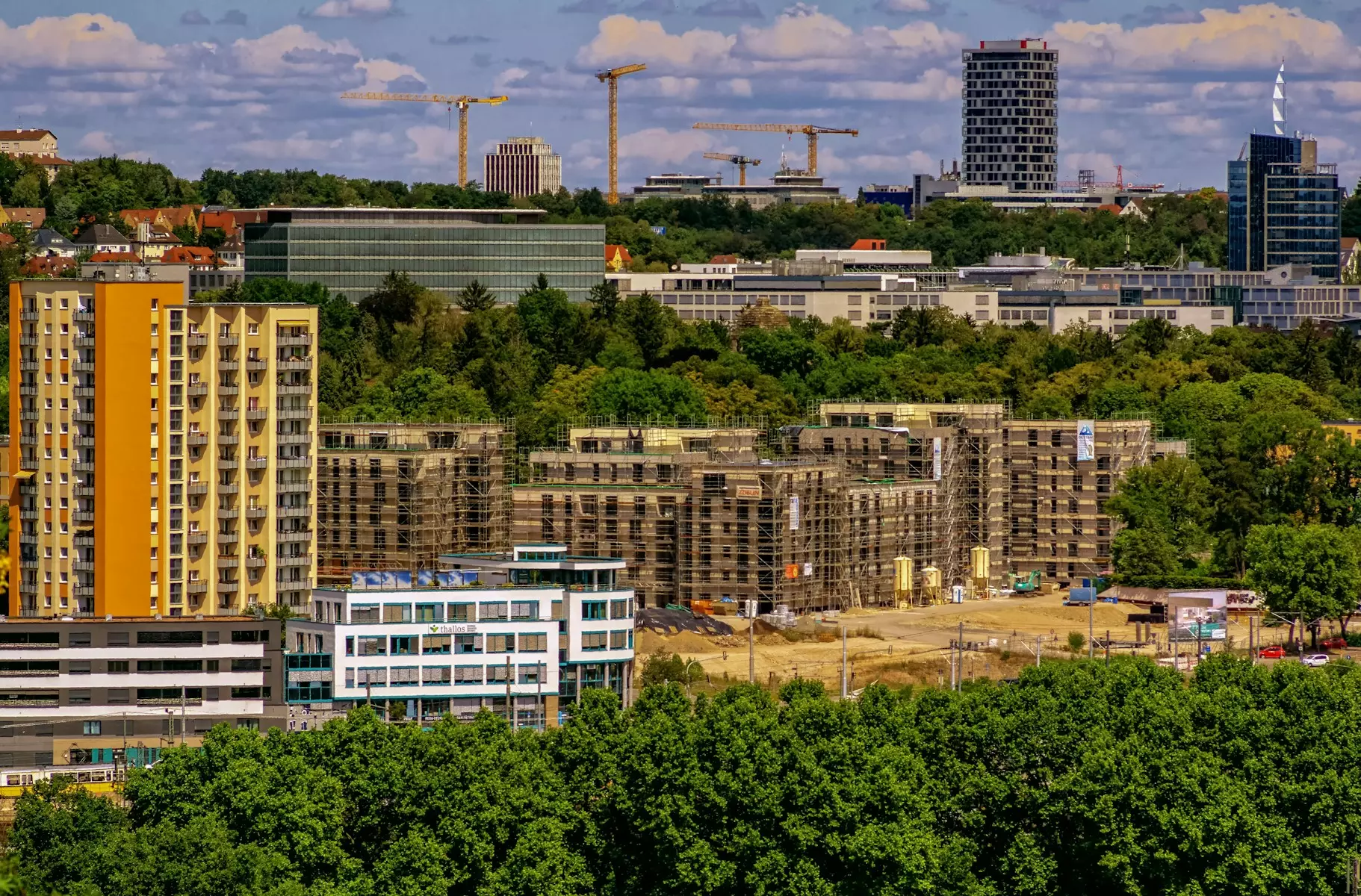Europe Real Estate Overview (2025)
The European real estate market stands at a fascinating crossroads as we move through 2025, presenting both challenges and opportunities for investors, homebuyers, and industry professionals. After navigating through years of economic uncertainty, rising interest rates, and shifting demographic patterns, the continent’s property sector is showing signs of stabilization and selective growth. From the sun-drenched coastlines of Portugal to the bustling financial districts of Frankfurt, European real estate continues to attract global attention, though the landscape has evolved significantly from the boom years of the previous decade.
Get one year Free Listings!
Subscribe to our newsletter and get 1 year listings + XML imports for free and enjoy a 100% discount on all listing placement packages, no strings attached!

Understanding the current state of European property markets requires a nuanced approach that considers regional variations, economic indicators, and emerging trends that are reshaping how people live and invest. This comprehensive overview examines the key factors influencing European real estate in 2025, highlighting where opportunities lie, which markets are experiencing the most dynamic changes, and what prospective buyers and investors should consider before making their next move. Whether you’re a seasoned property investor or a first-time buyer exploring European options, this analysis will provide valuable insights into one of the world’s most diverse and historically significant real estate markets.
European Real Estate Market Overview for 2025
The European real estate landscape in 2025 reflects a market in transition, with property values stabilizing after the volatility experienced in 2022 and 2023. Major metropolitan areas across Western Europe have seen price corrections ranging from 5% to 15% from their peaks, creating renewed interest from buyers who were previously priced out of premium markets. Cities like Amsterdam, Munich, and Paris have experienced moderate price adjustments, while emerging markets in Central and Eastern Europe, including Warsaw, Prague, and Budapest, continue to show resilience with steady appreciation rates between 3% and 7% annually.
Interest rates across the Eurozone have settled into a more predictable pattern following the European Central Bank’s measured approach to monetary policy. Current mortgage rates hover between 3.5% and 4.5% for prime borrowers, significantly lower than the peaks seen in 2023 but still elevated compared to the ultra-low rate environment of the previous decade. This normalization has brought more realistic expectations to both buyers and sellers, reducing the speculative fever that characterized certain markets while encouraging genuine long-term investment. The rental market remains robust across most European capitals, with yields in major cities ranging from 3% to 6%, making buy-to-let investments increasingly attractive for those seeking steady income streams.
Key Investment Opportunities Across Europe
Portugal continues to shine as one of Europe’s most attractive property investment destinations in 2025, particularly in Lisbon, Porto, and the Algarve region. The country’s Golden Visa program modifications have redirected investment toward interior regions and affordable housing projects, creating opportunities in previously overlooked areas. Property prices in Lisbon have stabilized after years of rapid growth, with average prices per square meter ranging from €4,000 to €7,000 depending on the neighborhood, while Porto offers more accessible entry points at €2,500 to €4,500 per square meter. The Portuguese rental market benefits from strong tourism fundamentals and a growing remote work population attracted by the country’s quality of life and favorable tax regimes for foreign residents.
Spain’s property market presents compelling opportunities across multiple regions, with coastal areas like Valencia, Malaga, and the Balearic Islands experiencing renewed demand from both European and international buyers. The Spanish market has recovered from its pandemic-era slowdown, with transaction volumes increasing by approximately 12% year-over-year in early 2025. Berlin and other German cities offer different investment propositions, focusing on stable, long-term appreciation and strong rental demand driven by persistent housing shortages. Eastern European markets, particularly Poland and Romania, are attracting attention from investors seeking higher growth potential, with cities like Krakow and Bucharest offering attractive yields above 6% combined with capital appreciation prospects as these economies continue converging with their Western European counterparts.
Regional Price Trends and Market Dynamics
Western European property markets display distinct characteristics that reflect their economic maturity and urbanization patterns. The United Kingdom, operating outside the Eurozone framework, has seen London property prices remain relatively flat through early 2025, with average prices hovering around £535,000, while regional cities like Manchester, Birmingham, and Edinburgh show more dynamic growth patterns between 4% and 8% annually. French real estate markets demonstrate the traditional Paris premium, where average apartment prices exceed €10,000 per square meter in desirable arrondissements, while Lyon, Bordeaux, and Toulouse offer more accessible alternatives with prices ranging from €3,500 to €5,500 per square meter and stronger rental yields.
Southern European markets continue their recovery trajectory with Greece emerging as a surprise performer, particularly in Athens and selected island locations where property prices have appreciated by double digits over the past two years. The Greek market benefits from improved economic fundamentals, tourism recovery, and attractive pricing compared to other Mediterranean destinations, with Athens city center properties available from €2,000 to €3,500 per square meter. Scandinavian markets, led by Sweden and Denmark, demonstrate characteristic stability with modest price growth of 2% to 4% annually, supported by strong economies, high living standards, and limited housing supply in major urban centers. Copenhagen and Stockholm maintain premium pricing reflective of their quality of life rankings, though both cities face affordability challenges that are prompting policy discussions about housing supply expansion.
Future Outlook for European Property Buyers
Looking ahead through 2025 and into 2026, European real estate markets are expected to maintain their current trajectory of moderate, sustainable growth rather than returning to the rapid appreciation seen in previous cycles. Demographic trends, including aging populations in Western Europe and continued urbanization in Eastern regions, will shape housing demand patterns, with increased focus on accessible, well-connected properties near healthcare and transportation infrastructure. The sustainability revolution is fundamentally transforming property values, as energy-efficient buildings command premium prices and older, inefficient properties face potential obsolescence or require significant renovation investments to meet evolving EU energy performance standards.
Technology integration and changing work patterns continue influencing property preferences, with hybrid work models sustaining demand for properties offering dedicated home office spaces and access to quality broadband infrastructure. Secondary cities and towns within commuting distance of major employment centers are benefiting from this trend, offering buyers more space and affordability without complete disconnection from urban opportunities. Currency fluctuations remain a consideration for international buyers, particularly those from outside the Eurozone, though the euro’s relative stability against major currencies provides some predictability. Overall, the European property market in 2025 favors informed, patient buyers who conduct thorough due diligence, understand local market dynamics, and take a long-term perspective rather than seeking quick speculative gains.
Comparison of Major European Property Markets
| City | Average Price per m² | Annual Appreciation | Rental Yield | Market Outlook |
|---|---|---|---|---|
| London | €8,500 | 1-2% | 3.5-4.5% | Stable |
| Paris | €10,500 | 2-3% | 3.0-4.0% | Moderate Growth |
| Berlin | €5,800 | 3-5% | 3.5-4.5% | Strong Growth |
| Madrid | €3,800 | 4-6% | 4.0-5.5% | Strong Growth |
| Lisbon | €5,500 | 3-4% | 4.5-6.0% | Moderate Growth |
| Amsterdam | €7,200 | 2-3% | 3.5-4.5% | Stable |
| Warsaw | €2,900 | 5-7% | 5.0-6.5% | Strong Growth |
| Athens | €2,500 | 6-8% | 4.5-6.0% | Strong Growth |
Frequently Asked Questions
Is 2025 a good time to buy property in Europe?
Yes, 2025 presents favorable conditions for European property buyers compared to recent years. Price corrections in many markets have improved affordability, while interest rates have stabilized at predictable levels. The market has moved away from speculative excess, creating opportunities for genuine buyers and long-term investors. However, success depends on careful market selection, thorough research, and realistic expectations about appreciation potential.
Which European countries offer the best property investment returns?
Portugal, Spain, Greece, and Poland currently offer some of the most attractive combinations of capital appreciation potential and rental yields. Portugal benefits from strong tourism and remote worker demand, Spain offers diverse regional opportunities with improving economic fundamentals, Greece presents value pricing with strong growth momentum, and Poland provides emerging market growth potential with EU membership stability. Each market has distinct characteristics requiring specific due diligence.
How do European property taxes compare across countries?
Property taxation varies significantly across Europe, from relatively low annual property taxes in countries like Malta and Monaco to higher rates in France and the United Kingdom. Spain charges between 0.4% and 1.1% of cadastral value annually, Portugal ranges from 0.3% to 0.8%, while the UK’s council tax system creates variable costs depending on property value bands. Purchase taxes also differ substantially, with Spain charging 6% to 10%, France around 7% to 8%, and Germany approximately 3.5% to 6.5% depending on the region.
What are the financing options for international property buyers in Europe?
International buyers can typically access European mortgage financing, though requirements are stricter than for local residents. Most European banks offer loan-to-value ratios between 60% and 80% for foreign buyers, with interest rates approximately 0.5% to 1% higher than resident rates. Required documentation usually includes proof of income, tax returns, bank statements, and identification documents. Some countries, particularly Spain and Portugal, have well-established processes for international buyer financing, while others may require larger deposits or prefer cash purchases.
How is climate change affecting European property values?
Climate considerations are increasingly influencing European property markets, with coastal properties in vulnerable areas facing potential value impacts from flooding risks and rising insurance costs. Conversely, properties in traditionally cooler climates may become more desirable as temperatures rise. Energy efficiency has become a critical value factor, with the EU’s energy performance certificate requirements affecting marketability. Properties with poor energy ratings face renovation requirements or potential rental restrictions in some jurisdictions, making energy-efficient homes command premium prices.
What legal considerations should foreign buyers understand?
Foreign property buyers in Europe must navigate varying legal frameworks across countries. Most EU nations allow unrestricted foreign ownership, though some, like Switzerland and Austria, maintain restrictions in certain areas. Legal processes differ significantly, with some countries like France using notary-based systems while others employ solicitor-driven transactions. Due diligence should include title verification, planning permission checks, outstanding debt searches, and understanding local inheritance laws. Engaging local legal representation familiar with international transactions is essential for protecting your interests.
In short
The European real estate market in 2025 offers a compelling mix of stability, opportunity, and diversity that continues attracting buyers and investors from around the world. After years of adjustment following pandemic disruptions and monetary policy shifts, the market has found a more sustainable equilibrium that favors informed decision-making over speculative behavior. From the established markets of Western Europe offering stability and mature infrastructure to the dynamic growth stories unfolding in Central and Eastern European cities, there are opportunities matching virtually every investment strategy and lifestyle preference.
Success in European property investment requires understanding that this is not a monolithic market but rather a collection of distinct regional and local markets, each with unique characteristics, regulatory frameworks, and growth drivers. Whether your interest lies in securing a retirement home on the Mediterranean coast, building a rental property portfolio in an emerging capital city, or diversifying your investment holdings with stable European assets, 2025 presents conditions that reward patience, thorough research, and professional guidance. As Europe continues evolving economically, demographically, and technologically, its real estate markets will remain central to global property investment strategies for years to come.






Join The Discussion